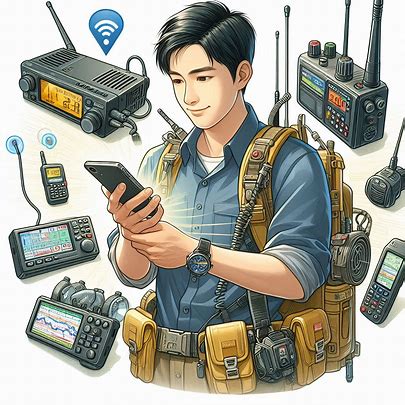Grid Power Outage Communication Options: When the power goes out, staying connected becomes challenging, but it’s crucial for safety and coordination. Grid power outage communication options range from basic text messaging to more advanced tools like two-way radios and satellite phones. Depending on the extent of the outage and the infrastructure affected, some communication methods may still function while others might fail. Understanding these options can help you prepare for any scenario, ensuring you can maintain contact with others during an emergency. Below, we explore the best alternatives to using your cell phone when the grid is down.
Reliable Communication Methods During a Grid Power Outage
Here are some alternatives to using your cell phone for communication during such an event:
1. Text Messaging (SMS)
First, can text messaging work? Yes, even if voice calls and data are unavailable, text messages may still work during a power outage if cell towers are operational. Texts use less bandwidth and sometimes get through when voice calls cannot. However, if the cell towers are also down or out of power, SMS will not function. Check this page for HOW TEXT MESSAGING WORKS DURING A POWER OUTAGE.
2. Two-Way Radios
Moreover, two-way radios offer a reliable alternative:
FRS/GMRS Radios: Family Radio Service (FRS) and General Mobile Radio Service (GMRS) radios are good for short-distance communication (up to several miles, depending on terrain). GMRS requires a license, but FRS does not. These radios are widely available and reliable when other communication methods fail.
Ham (Amateur) Radio: Additionally, Ham radios can communicate long distances without relying on infrastructure like cell towers. They require a license to operate but are a top choice for emergency communications. Depending on equipment and atmospheric conditions, ham radios can communicate locally and internationally.
Walkie-Talkies: Finally, walkie-talkies (FRS radios) are useful for communicating within a close range (1-2 miles, depending on obstructions) and require no license.
Grid Power Outage Communication Options: Satellite Phones and Emergency Beacons: Staying Connected Over Long Distances
3. Satellite Phones
Furthermore, satellite phones can send and receive calls and texts without relying on local cell towers. They communicate via satellites, making them useful in widespread outages. However, they are expensive and may require special service plans.

Furthermore, satellite phones can send and receive calls and texts without relying on local cell towers. They communicate via satellites, making them useful in widespread outages. However, they are expensive and may require special service plans.
4. Emergency Beacons (PLBs)
Additionally, Personal Locator Beacons (PLBs) and other emergency satellite messengers (like Garmin inReach) can use satellite communication to send distress signals and even short texts.
Mesh Network Apps and Traditional Landline Phones for Power Outages
5. Mesh Network Apps
Next, apps like Bridgefy or GoTenna use Bluetooth or Wi-Fi to create a mesh network for communication between devices without cellular service. These can work for short distances (a few hundred feet) between users with the same app and are useful for local communication during outages.
6. Landline Phones
If you have a traditional landline (not a VoIP phone), it might still work during a power outage because landlines have their power supply. However, most modern systems, especially those using fiber optic or cable, may only function with power if they have backup generators.
7. CB Radios
Lastly, Citizens Band (CB) radios, commonly used by truckers and hobbyists, can also be effective for short-range communication (up to 10 miles) in an emergency.
Conclusion: Ensuring Communication When the Grid Goes Down – Grid Power Outage Communication Options

In summary, text messaging can still function effectively during a power outage, provided local cell towers remain operational and have sufficient power. However, text messages will not go through if the outage disrupts or disables the cellular network. For more comprehensive communication solutions, especially during extended outages or when the local infrastructure fails, you can rely on alternatives like two-way radios, which are ideal for short-range communication. Similarly, satellite phones provide reliable communication without needing local networks, making them useful for widespread outages. Furthermore, mesh network apps, which use Bluetooth or Wi-Fi, allow local communication between devices even when cellular service is unavailable. These methods provide dependable alternatives to ensure you stay connected during power grid failures.
